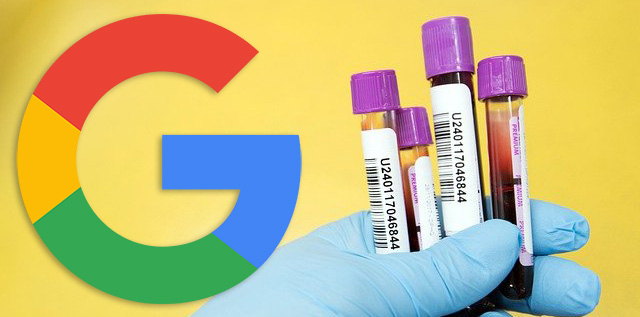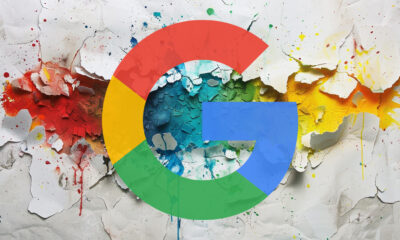SEARCHENGINES
Google Say Writing You Tested A Product Is Not Enough For Product Reviews Update

One of the newish lines from the March 2022 Google Product Reviews update, which is now completely rolled out, announcement is where Google said “including original images from tests you performed with the product can be good ways to do this” But writing that you tested a product in your content is not enough to convince Google you actually tested a product.
Alan Kent from Google was asked about this by Vlad Rappoport on Twitter and Alan replied “don’t expect big boosts if the review only adds a few sentences saying ‘I tested it myself too’ with the rest paraphrasing the original product description.” So again, just putting a label that you tested the product onsite or writing that you tested it onsite, is simply not enough.
Look at the overall best practices for product reviews from Google to see what Google really wants. Alan also added on Twitter “I would focus on the intent: create useful, authentic, trusted, reviews that bring new insights and deliver value to users. The published best practices are guidance towards these goals, not binary in/out decision points.”
So again, this is not about having a couple words that says tested and approved or some meta tag, it is about the content itself showing that you actually tested it. Now, not all reviewers can test all products they review, but the best ones can. They some how manage to get the product, either as a loaner from the manufacturer, or they buy it themselves to test. Heck, I am buying a super expensive Lucid Air and that will help me really be an authority on it for my Lucid Insider blog. But Lucid Motors gave loaners to car reviewers so they can spend time with the car and test it themselves and some even bought the car and spent weeks with it before publishing their reviews. I also looked deep into forums to find feedback from real Lucid Air owners for some of my content. But I won’t fully understand this car without owning it myself. It is just the competitive content world we live in these days.
Here are those tweets:
You can certainly create a useful review without eating the product. E.g. people know too much sugar is not good for you. But dont expect big boosts if the review only adds a few sentences saying “I tested it myself too” with the rest paraphrasing the original product description
— Alan Kent (@akent99) April 13, 2022
Given ML models will never be perfect, I would focus on the intent: create useful, authentic, trusted, reviews that bring new insights and deliver value to users. The published best practices are guidance towards these goals, not binary in/out decision points.
— Alan Kent (@akent99) April 13, 2022
Forum discussion at Twitter.
Source: www.seroundtable.com
SEARCHENGINES
Daily Search Forum Recap: April 18, 2024
Here is a recap of what happened in the search forums today, through the eyes of the Search Engine Roundtable and other search forums on the web.
Google Ads notified advertisers that some ad customizers will stop working soon. Google discontinued the limited use video carousel markup. Google Maps has new directions and travel features, plus a bunch of new EV features. Google Notes on Search might not end in May 2024 despite what people suggest. Google Business Profiles asked businesses to register their defibrillators, their AEDs.
Search Engine Roundtable Stories:
-
Google Notes On Search Won’t Necessarily Go Away In May
There have been some people noticing that the Google Notes On Search labs experiment has an end date of May 2024 and thus they are expecting Notes on Search to be turned off by then. Just because it has that end date listed, it does not mean the labs experiment will end on that date. -
Google Maps Releases New Directions, Travel & EV Features
Google has announced a number of new travel features with Google Maps and Travel around driving alternatives, trains and buses, travel impact mode and then some new EV driving direction features. Google says these features are to give you more “sustainable choices.” -
Google Ads Reminds Advertisers Some Ad Customizers Will Go Away May 31st
On August 31, 2021, Google notified advertisers it would drop support for expanded text ads for responsive search ads. Google is now reminding advertisers that Ad customizers for text ads, expanded text ads and Dynamic Search Ads will stop serving after May 31, 2024. -
Google Drops Video Carousel Markup
Google has discontinued its support for video carousel markup and has thus removed it from its video structured data help documentation. Initially, Google tested video carousel on a limited number of sites and is now saying that it “ultimately found that it wasn’t useful for the ecosystem at scale.” -
Google Business Profiles Register Your Defibrillator (AED)
Google sent out emails a couple of days ago to businesses asking them to register their Automated External Defibrillator (AED) with Google Business Profiles. Google said, “you could save lives” if you do it. -
Google NYC Earthquake Reaction Video
A couple of weeks ago we had an earthquake in the New York region and I finally found a video from the Google NYC office of the reaction of some Googlers while the earthquake happened. These Googlers were recording a video and felt it but were unsure if that was a real earthquake.
Other Great Search Threads:
Search Engine Land Stories:
Other Great Search Stories:
Analytics
Industry & Business
Links & Content Marketing
Local & Maps
Mobile & Voice
SEO
PPC
Search Features
Other Search
Feedback:
Have feedback on this daily recap; let me know on Twitter @rustybrick or @seroundtable, on Threads, Mastodon and Bluesky and you can follow us on Facebook and on Google News and make sure to subscribe to the YouTube channel, Apple Podcasts, Spotify, Google Podcasts or just contact us the old fashion way.
SEARCHENGINES
Daily Search Forum Recap: April 17, 2024
Here is a recap of what happened in the search forums today, through the eyes of the Search Engine Roundtable and other search forums on the web.
The Google March core update still is causing volatility and it is deepening. Google may make changes to the crawl stats report in Search Console. Google Search Console now shows unused ownership tokens. Google Maps will drop the review drafts. Google Add added generative AI for image generate for Demand Gen campaigns. Google Search is testing more sitelinks designs.
Search Engine Roundtable Stories:
-
Deepening Google Core Ranking Volatility Hits Yesterday & Today
I know we just reported on more volatility this Monday, possibly related to the Google March 2024 core update, but we are seeing even more volatility over the past 24 hours related to this update. This volatility shows deepening movement for those who were hit, which is incredibly sad in many cases. -
Google Search Console Adds Unused Ownership Tokens
Google Search Console has a new security feature under user and permission management to help you manage your unused ownership tokens. Basically, it helps you manage who has permissions to your Search Console profiles and who should not, maybe some legacy verifications. -
Google: Should We Explain The Crawl Stats Report in Search Console
Martin Splitt from Google posted a one-line question asking, “Should we do something to explain the crawl stats report in GSC?” This was posted on Mastodon, which has a small audience, but the responses were pretty good. -
New Google Ads AI Generated Image Tool For Demand Gen Campaigns
Google Ads announced that Demand Gen campaigns are getting generative AI tools to create image assets. This is rolling out to advertisers around the world in English with more languages to come later this year, Google said. -
Google Tests Horizontal Lines For Sitelinks & People Also Ask
Google Search is testing horizontal lines under the sitelinks and the people also ask elements in the search results. This is a long horizontal line that goes across the while search result snippet. -
Google Maps No Longer Will Support Draft Reviews
Google Maps will soon stop supporting drafting reviews for local business listings and Google Business Profiles. Google said that starting July 16, 2024, review drafts will no longer be supported. -
Doogler In Google Play Area
Some of you love photos of dogs, so here is another one of a Doogler, a Google dog, in a play area, at the Google office. This was shared by the Life at Google Twitter account.
Other Great Search Threads:
Search Engine Land Stories:
Other Great Search Stories:
Analytics
Industry & Business
Links & Content Marketing
Local & Maps
Mobile & Voice
SEO
PPC
Search Features
Other Search
Feedback:
Have feedback on this daily recap; let me know on Twitter @rustybrick or @seroundtable, on Threads, Mastodon and Bluesky and you can follow us on Facebook and on Google News and make sure to subscribe to the YouTube channel, Apple Podcasts, Spotify, Google Podcasts or just contact us the old fashion way.
SEARCHENGINES
Daily Search Forum Recap: April 16, 2024
Here is a recap of what happened in the search forums today, through the eyes of the Search Engine Roundtable and other search forums on the web.
Google will fight the site reputation abuse spam both algorithmically and with manual actions. Google is testing thumbs-up and down in product carousels. Google Ads similar product carousel is being tested. Google Search updated its image documentation. Google AdSense has a new ad format named ad intents.
Search Engine Roundtable Stories:
-
Google Will Fight Site Reputation Abuse Spam Both With Manual Actions & Algorithms
Google’s new spam algorithm update also introduced new spam policies including the upcoming site reputation abuse policy that won’t go into effect until May 2024. Google has confirmed it will fight site reputation abuse spam using both manual actions (humans) and algorithms (machines). -
Google Search Tests Thumbs Up/Down Buttons In Product Grid Results
Google launched the style recommendations with thumbs up and down buttons not long ago after testing it in January. Now Google is showing this thumbs up and down buttons in the product grid search results, so Google can see what you like or dislike and then show you more products that you do like. -
Google Ads “Similar Product” Carousel
Google has a similar products section and carousel for Google Ads sponsored listings. We have seen similar products and similar shopping related results from the organic / free listings but now I am seeing examples of a search ad carousel for “similar products.” -
Clarification: Google Search Supports Images Referenced From src Attribute
Google has clarified in its image search help documentation that images are only extracted from the src attribute of img tags in Google Search. This is not new, but Google decided to update its documentation based on some questions it received about the topic. -
Google AdSense New Ad Intents Formats – Links & Anchors In Content
Google AdSense announced a new auto ads format named “Ad intents.” Ad intents places links and anchors showing organic search results with ads into existing text and pages on your site related to your content. Yea, it takes your content, and hyperlinks it to the Google search results. -
3-Wheel Tricycle At Google
Google’s Ann Arbor office has this 3-wheel tricycle that some Googlers have used over the years to get around the office. This one looks like the hot pink Huffy brand. I spotted this recently on Instagram but the photo is from 2016.
Other Great Search Threads:
- I don’t have an update to share at this time, but you should continue to use classic GMC for rules and supplemental feed support. Here’s how to switch back if needed, AdsLiaison on X
- In this case, I’ve been introducing a new metric; “likelihood to get search traffic” to see what we should add to XML sitemaps. Some pages might do incredibly well on other metrics, but simply, Joost de Valk on X
- It does have a title, and it loads a HTML page – so this seems normal. The JavaScript doesn’t seem to be loading well, so if you’re the site owner, I’d suggest reading ou, John Mueller on X
- News! Google Ads removed in some accounts the possibility to hover over a daily budget to edit it. You need to hover now and then click on “Edit budget”. Why changing things to less user-friendly ones, Thomas Eccel on X
- The time has come! Registration for the Zürich Product Experts Summit has now opened for eligible PEs in Europe. Virtual registration will follow in May. Check your inboxes and the KB for more details., Google’s Product Experts Program on X
- When I want to add positive search terms as exact match, I first add them quickly as broad, then bulk switch them over to exact match. lately I’ve been getting this error and the only way I can switch the keywords is by using Ads Editor., Greg on X
- Yeah, quantity says nothing about quality and even less about user value or business value. Sometimes the solution to a “crawl budget problem” is not to make the server faster & search engines, John Mueller on X
- Which the best method to link to the alternative language of a website, WebmasterWorld
Search Engine Land Stories:
Other Great Search Stories:
Analytics
Industry & Business
Links & Content Marketing
Local & Maps
Mobile & Voice
SEO
PPC
Search Features
Other Search
Feedback:
Have feedback on this daily recap; let me know on Twitter @rustybrick or @seroundtable, on Threads, Mastodon and Bluesky and you can follow us on Facebook and on Google News and make sure to subscribe to the YouTube channel, Apple Podcasts, Spotify, Google Podcasts or just contact us the old fashion way.
-

 SEO7 days ago
SEO7 days agoGoogle Limits News Links In California Over Proposed ‘Link Tax’ Law
-

 SEARCHENGINES6 days ago
SEARCHENGINES6 days agoGoogle Core Update Volatility, Helpful Content Update Gone, Dangerous Google Search Results & Google Ads Confusion
-

 SEO6 days ago
SEO6 days ago10 Paid Search & PPC Planning Best Practices
-

 MARKETING6 days ago
MARKETING6 days ago2 Ways to Take Back the Power in Your Business: Part 2
-

 MARKETING5 days ago
MARKETING5 days ago5 Psychological Tactics to Write Better Emails
-

 SEARCHENGINES5 days ago
SEARCHENGINES5 days agoWeekend Google Core Ranking Volatility
-

 PPC7 days ago
PPC7 days agoCritical Display Error in Brand Safety Metrics On Twitter/X Corrected
-

 MARKETING6 days ago
MARKETING6 days agoThe power of program management in martech












You must be logged in to post a comment Login